The Type 98 So-Da (九八式装甲運搬車 ソダ, Kyūhachi-shiki Sōkounpansha So-Da) was a tankette used as armored personnel carrier, and ammunition carrier. It was developed for the Imperial Japanese Army and was mostly used in China and Burma-Malaya. Production is unknown, but assumed to be about 200 vehicles, from 1941 to 1942.
The Type 98 So-Da was designed as a personnel and ammunition carrier, in frontline. So it was designed to run on all terrains, and protect its crew to some extent (from rifle fire). In addition, it doubled down as a light artillery tractor, towing a gun trailer. The rear open bay therefore carried the ammo and gun crew as well. The hull was low, with an open top "flatbed" in the back and rear double door for easier access. This flatbed could be covered with a tarpaulin however in the monsoon, covered by frames placed in three rail supports. The towing coupling was secured to the hull frame by using a "semi-elliptical spring" protecting the frame from terrain vibration coming from the towed payload.
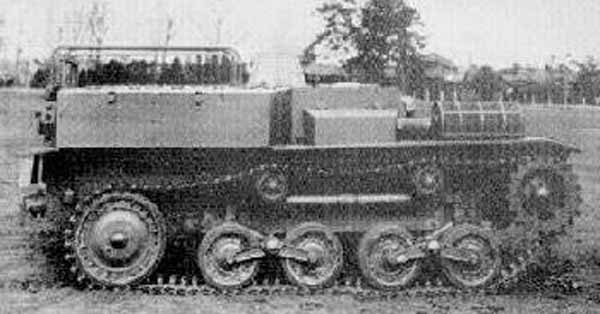
The So-Da weighted 5 tons (light), measuring 3.8 m (12 ft 6 in) overall, by 1.9 m (6 ft 3 in) in width, and just 1.6 m (5 ft 3 in) tall on top of the small driver cab. The crew comprised a driver, co-driver, and from four to six gun servants or infantry depending on its role. Protection was relatively weak, at least for the seated crew behind, as the rear was open-top. Only the flanks and rear plates were about 6mm, protected against small arms fire, but not shrapnel. However it was better at the front, with a sloped glacis plate and where the driver was seated, a protruding turret-like structure with a hatch above and armoured shutters. This part was protected by 12 mm of armor, meaning with the slope, an artificial thickness of about 20 mm. So it was proof against heavy machine gun rounds like the Vickers or Browning 0.5 in, and possibly Oerlikon guns.
The So-Da does not have any proper armament. Only the small arms carried by the infantry, gun servant and crew. The Ikegai in-line 6-cylinder air cooled diesel engine was located on the left (seen from the front) and could be accessed by a single hatch in the front glacis for maintenance. There was a large exhaust on the left mudguard. This engine developed 65 PS at 2300 rpm. Range was about 200 km and top speed 45 kph (28 mph). Its Suspension system used a bell crank, like the original Type 97 tankette, using also the same drivetrain with rear idlers wheels, front sprockets, two bogies with two twin road-wheels each and two return rollers per side. Ground Clearance was 340 mm. Its Payload capacity was about 1 ton of ammunition, or for some sources 10 infantry (if the crew was part of it, but its dubious - src globalsecurity.org). Performance-wise, the vehicle could travel up to 250 km on rough to moderate terrain with a specific power of 13 hp/ton. It's hara type suspensions allowed it to overcoming a ditch 1.65 m wide, or fording a 0.78 m deep river.
Production started in 1940 and it was designed to carry a crew of 6-8, unarmed but with a portable telemeter for the gunnery officer. It had a rear compartment for the observers and a radio operator. A large radio station occupied the former ammunition bins. In addition to telemeters, the vehicle also had a cable reel. In combat, observers located ground targets, and transmitted coordinates to artillery positions sing radio. They observed the strike and brought corrections. The Te-Re was used to carry also extra surveillance and radio equipments. About 100 to 150 were produced in 1940-42.
A more exhaustive depiction on History of War On www3.plala.or.jp
On globalsecurity.com
3D views
on wardrawings.be
On masodikvh.hu
archive, honved.com
Foss, Christopher F (2002). The Encyclopedia of Tanks and Armored Fighting Vehicles: The Comprehensive Guide to over 900 Armored Fighting Vehicles from 1915 to the Present Day. Thunder Bay Press. ISBN 1-57145-806-9.
Tomczyk, Andrzej (2003). Japanese Armor Vol. 3. AJ Press. ISBN 978-8372371287.
Design
Type 98 So-Da design process started in 1937, from an army request for such vehicle. To gain time, Mitsubishi worked from the chassis of the readily available Type 97 Te-Ke tankette. To perform its mission however, Japanese engineers decided to move the engine compartment to the front, moving also the transmission, gearbox and drive sprockets. Several iterations were made and factory tests in 1939, followed by army tests in early 1940, and final army acceptance trials in late 1940. Production started in mid-1941 and ran for about one year, until late 1942.The Type 98 So-Da was designed as a personnel and ammunition carrier, in frontline. So it was designed to run on all terrains, and protect its crew to some extent (from rifle fire). In addition, it doubled down as a light artillery tractor, towing a gun trailer. The rear open bay therefore carried the ammo and gun crew as well. The hull was low, with an open top "flatbed" in the back and rear double door for easier access. This flatbed could be covered with a tarpaulin however in the monsoon, covered by frames placed in three rail supports. The towing coupling was secured to the hull frame by using a "semi-elliptical spring" protecting the frame from terrain vibration coming from the towed payload.

The So-Da weighted 5 tons (light), measuring 3.8 m (12 ft 6 in) overall, by 1.9 m (6 ft 3 in) in width, and just 1.6 m (5 ft 3 in) tall on top of the small driver cab. The crew comprised a driver, co-driver, and from four to six gun servants or infantry depending on its role. Protection was relatively weak, at least for the seated crew behind, as the rear was open-top. Only the flanks and rear plates were about 6mm, protected against small arms fire, but not shrapnel. However it was better at the front, with a sloped glacis plate and where the driver was seated, a protruding turret-like structure with a hatch above and armoured shutters. This part was protected by 12 mm of armor, meaning with the slope, an artificial thickness of about 20 mm. So it was proof against heavy machine gun rounds like the Vickers or Browning 0.5 in, and possibly Oerlikon guns.
The So-Da does not have any proper armament. Only the small arms carried by the infantry, gun servant and crew. The Ikegai in-line 6-cylinder air cooled diesel engine was located on the left (seen from the front) and could be accessed by a single hatch in the front glacis for maintenance. There was a large exhaust on the left mudguard. This engine developed 65 PS at 2300 rpm. Range was about 200 km and top speed 45 kph (28 mph). Its Suspension system used a bell crank, like the original Type 97 tankette, using also the same drivetrain with rear idlers wheels, front sprockets, two bogies with two twin road-wheels each and two return rollers per side. Ground Clearance was 340 mm. Its Payload capacity was about 1 ton of ammunition, or for some sources 10 infantry (if the crew was part of it, but its dubious - src globalsecurity.org). Performance-wise, the vehicle could travel up to 250 km on rough to moderate terrain with a specific power of 13 hp/ton. It's hara type suspensions allowed it to overcoming a ditch 1.65 m wide, or fording a 0.78 m deep river.
Variant: Type 100 Te-Re artillery observation tankette
The Type 100 Te-Re artillery observation vehicle was developed for target detection and reconnaissance. It was used to assist self-propelled and stationary artillery. The Type 100 Te-Re used the So-Da as a base. It was lighter (4.9t) but larger at 4.07m long, 1.99m wide, 1.9m tall. It use also an Ikegai OHV Series Air-cooled, inline 4-cylinder, diesel which developed 65hp @ 2300rpm allowing for a 13.27hp/t ratio and about 40 kph top speed.Production started in 1940 and it was designed to carry a crew of 6-8, unarmed but with a portable telemeter for the gunnery officer. It had a rear compartment for the observers and a radio operator. A large radio station occupied the former ammunition bins. In addition to telemeters, the vehicle also had a cable reel. In combat, observers located ground targets, and transmitted coordinates to artillery positions sing radio. They observed the strike and brought corrections. The Te-Re was used to carry also extra surveillance and radio equipments. About 100 to 150 were produced in 1940-42.
Operational use of the Type 98 So-Da
The Type 98 So-Da Tankette was mainly used in China, arriving in China in late 1941. It remained there in operation until the end of the war, but was also deployed in Burma and Malaya. It was given to Imperial Japanese artillery units, operating in conjunction with the Te-Re. As the So-Da, the Te-Re was used mainly in China until 1945. At least one was captured by British forces in Burma in 1945 and reused, painted green with a white star.Links about the So-Da
The So-Da on WikipediaA more exhaustive depiction on History of War On www3.plala.or.jp
On globalsecurity.com
3D views
on wardrawings.be
On masodikvh.hu
archive, honved.com
Foss, Christopher F (2002). The Encyclopedia of Tanks and Armored Fighting Vehicles: The Comprehensive Guide to over 900 Armored Fighting Vehicles from 1915 to the Present Day. Thunder Bay Press. ISBN 1-57145-806-9.
Tomczyk, Andrzej (2003). Japanese Armor Vol. 3. AJ Press. ISBN 978-8372371287.
Type 98 So-Da specifications | |
| Dimensions | 3.86 x 1.93 x 1.57 m (ft) |
| Total weight, battle ready | 5.08 tons (15780 lbs) |
| Crew | 3 (driver, commander/gunner, machine-gunner) |
| Propulsion | Ikegai 6-cyl. diesel AC 65 hp (? kW) |
| Suspension | Bell crank |
| Armement | None, towed artillery, personal weapons |
| Armor | 6 to 12 mm (0.24-0.5 in) |
| Top speed | 45 km/h (mph) |
| Range (road/off road) | 250 km (mi) |
| Total production | circa 200 |

Type 98 So-Da, towing a Type 94 37 mm antitank gun, China, 1941
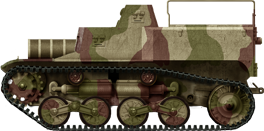
Type 98 So-Da, with an extra obsrvation turret and tarp frame over the rear open bay, Burma, 1942.
Photos
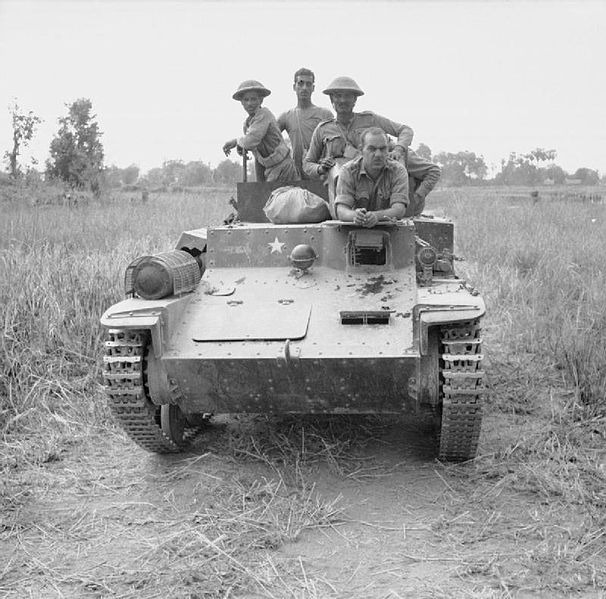
Captured So-Da in British service in Burma, 1945. (cc)
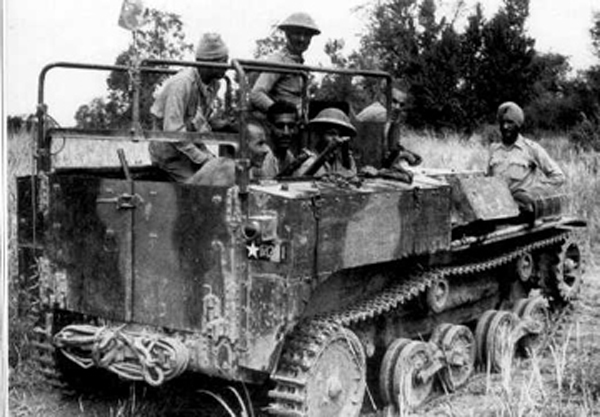
Captured by Indian troops in Burma, rear view - Src: tanks!
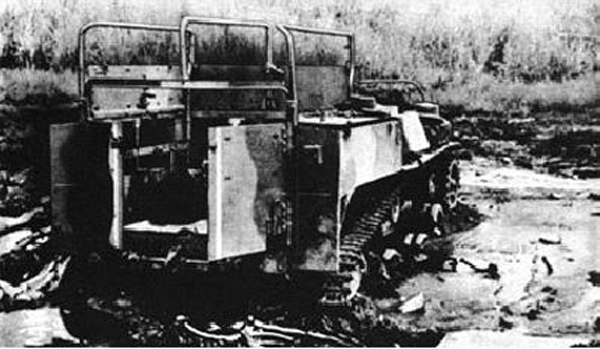
Same, rear view. Src Encyklopedia Uzbrojenia
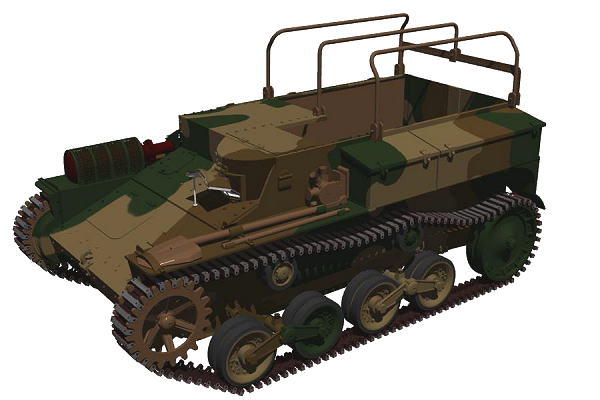
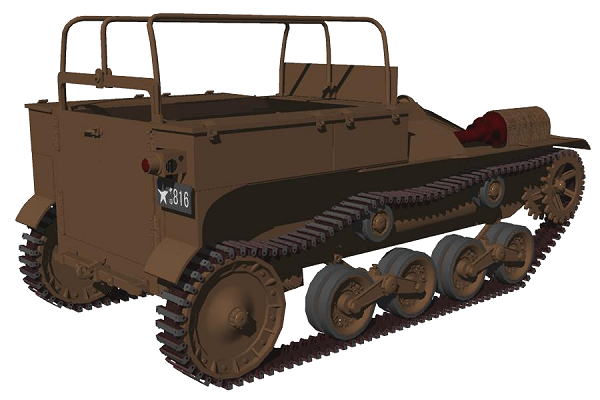
Front and back 3d renditions SRC Studio Funatsu

WW2 Tanks




























WW2 tanks posters

All Tiger tanks liveries.

Panther liveries and variants

WW2 Armour - All tanks











Tanks aces and single tanks series

Find more there

Museums, Movies, Books & Games
The Tanks and Armor in pop culture
Tanks and armored vehicles in general are only really grasped when seen first person: The mass, the scale, it's all there. Explore also the way tanks were covered in the movie industry, in books and in video games.Movies:
Best tanks movie on warhistoryonline.com
On imdb.com
On bestsimilar.com/
miltours.com
liveabout.com/
watchmojo.com
Video Games:
pcgamesn.com
historyhit.com
levvvel.com
vg247.com/best-tank-games
mmobomb.com/
alienwarearena.com

